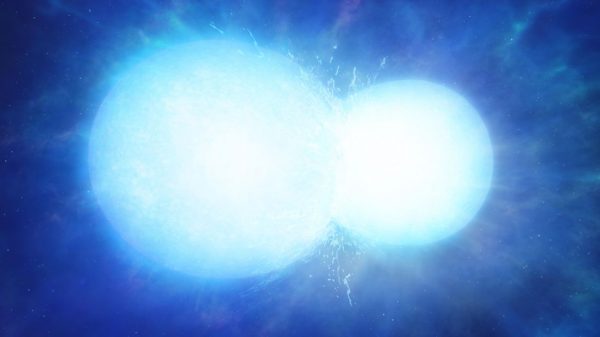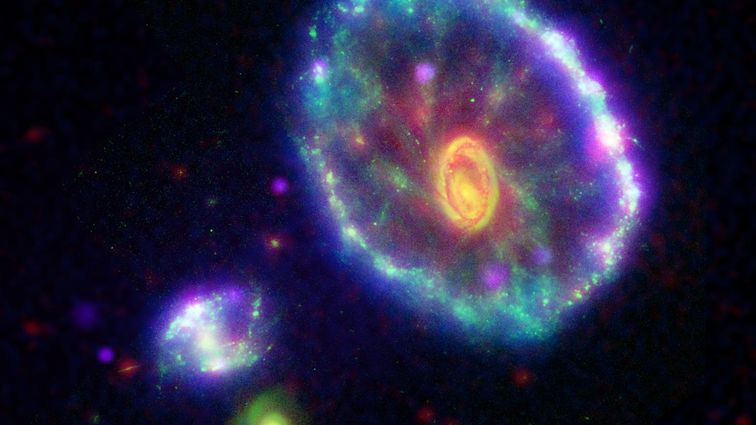Astronomers find a bizarre, dying star that ‘didn’t make any sense’ – CNET

An artist’s impression of two white dwarfs — stars at the end of their lives — merging.
Mark Garlick/University of Warwick
Astronomers have detected a bizarre star with a chemical composition unlike any seen before. But using space- and ground-based telescopes to examine the star, which is around 150 light-years from the Earth, a collaboration of international scientists think they know why it looks so weird: It cannibalized a neighboring star.
The study, published in the journal Nature Astronomy on Monday, examines the unusual dying star, dubbed WD J055134.612+413531.09 (WDJ0551+4135, for short), which was first identified by the European Space Agency’s Gaia telescope, an orbiting observatory surveying space and studying the brightness of stars, how they move and a ton of other cosmic phenomena. Gaia spotted WDJ0551+4135 in 2018, and subsequent work showed it was a particularly large white dwarf, almost twice as large as similar stars that have been discovered.
Using the ground-based William Herschel Telescope, located in Spain’s Canary Islands, the research team studied the dwarf’s composition to find out which star stuff makes it up. They could do that because the light emanating from WDJ0551+4135 can help identify the chemicals present. As stars at the end of their life, white dwarfs are cooling off, and they usually consist of a mix of carbon and oxygen or of oxygen and neon, surrounded by layers of helium and hydrogen.
Studying these chemicals, the researchers were surprised to find the level of carbon was much higher than they expected for a white dwarf of this size.
“This star stood out as something we had never seen before,” said Mark Hollands, an astrophysicist at the University of Warwick and lead author on the study, in a press release. “When we looked at it, it didn’t make any sense.”
What did make a little more sense was that perhaps WDJ0551+4135 wasn’t just a single dying star but had, at some point over a billion years ago, merged with another white dwarf. Such an explanation seemed to fit with the unusual composition and size the astronomers were seeing in WDJ0551+4135.
Here’s what might have happened: Two stars were in a delightful dance together, potentially for billions of years. The dance was doomed. Stars, like bacteria, bugs and humans, have finite life cycles. As they begin to die, they swell up, and their dance of death gets dicey. They get closer and closer until eventually, they merge.
Further evidence comes from the way the star was moving around the Milky Way. It seems that WDJ0551+4135 is the Usain Bolt of white dwarfs — zipping around faster than 99% of similar stars. That was another clue that Hollands said leads to only one explanation: a merger of two white dwarfs.
If the theory holds, it’s the first time astronomers have been able to detect a white dwarf merger by studying the chemical composition of the star. However, confirmation will require further study, and Hollands suggests a technique known as asteroseismology — the study of how stars pulse and oscillate — could lead to independent verification by revealing exactly what the core of this white dwarf is made of.

21 Photos







